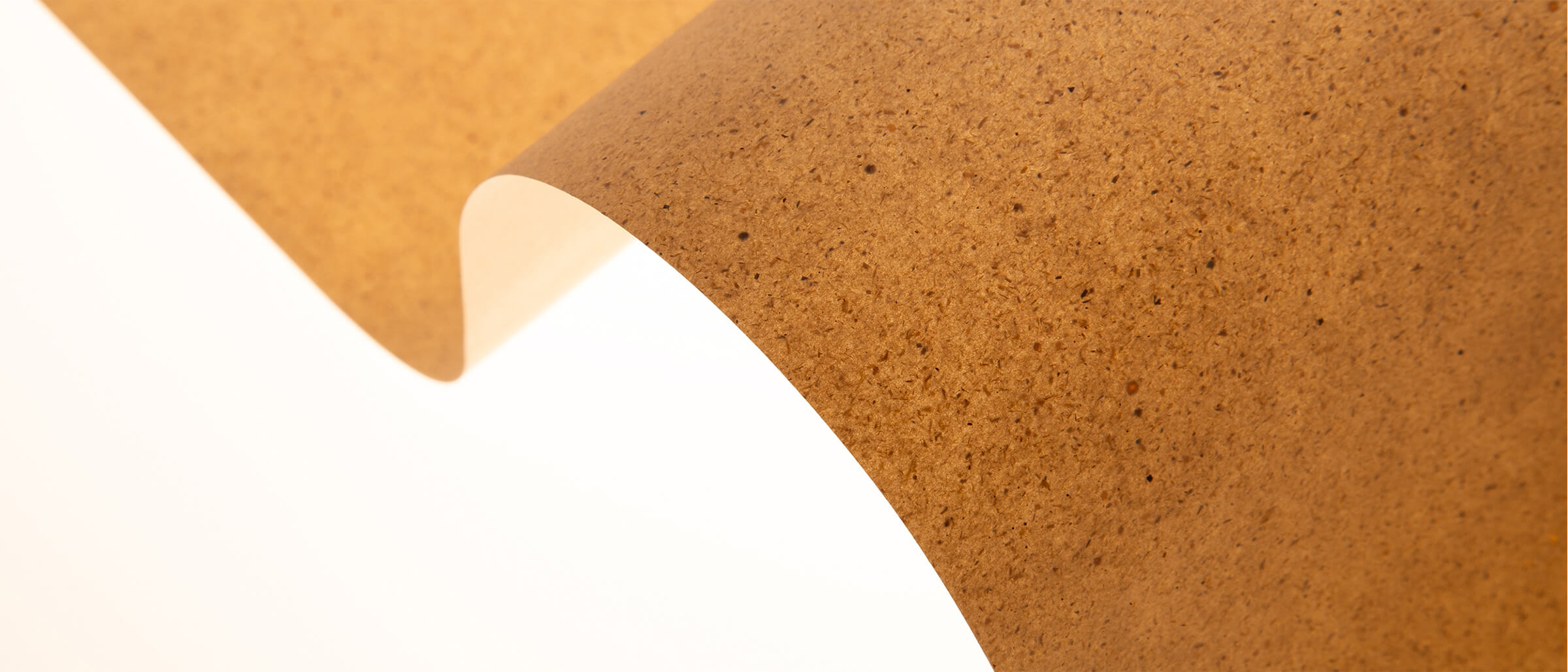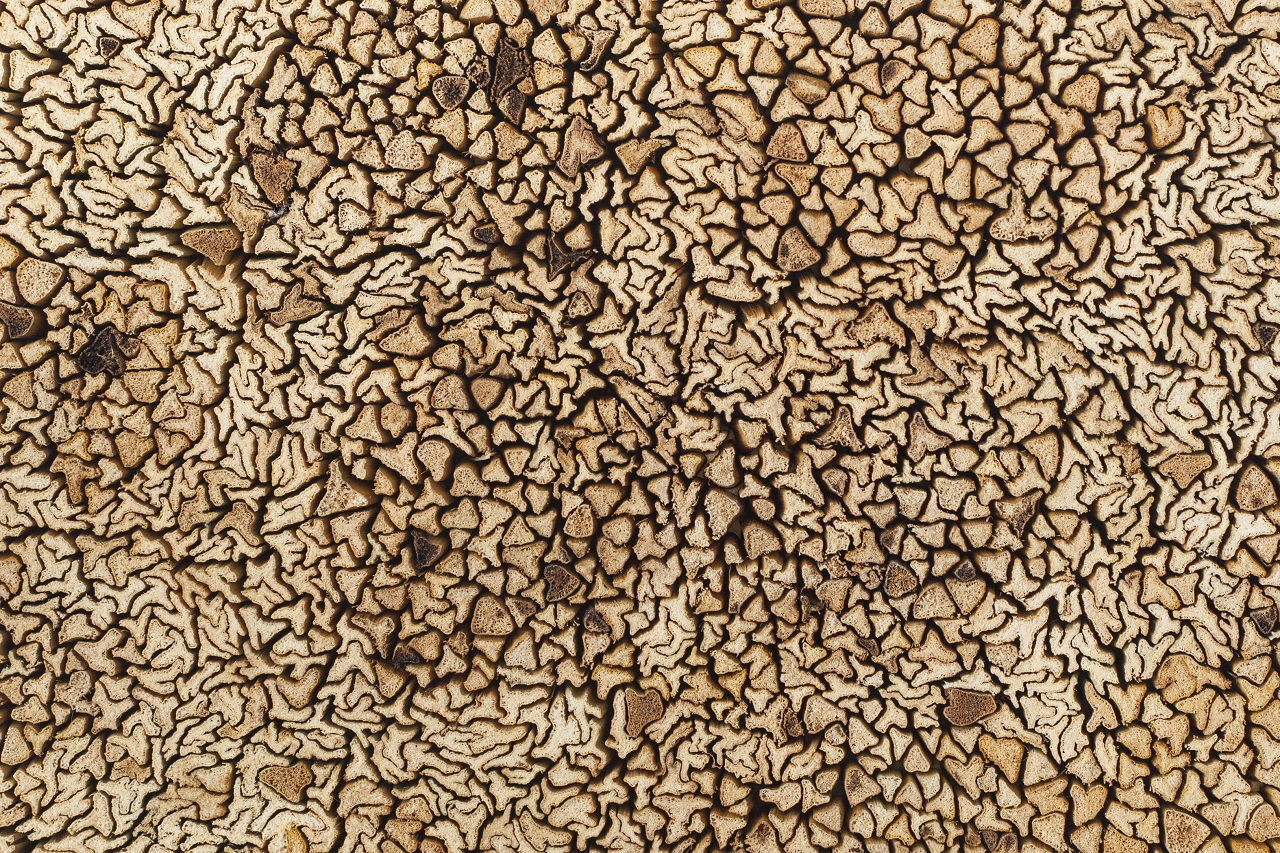
1
Last but not least, we can consider the growing (organic) materials produced by nature itself and the materials created from these raw materials as a basic group.
The typical representative is wood - its size and properties are defined by the size and type of tree and the layers of cells of which it is composed. This group also includes plant materials such as hemp, flax or bamboo, which, together with other fast-growing plants, partially replace wood production as well as the related production of cellulose fibres, e.g. for the clothing industry (Lyocell or viscose). New ways of obtaining input cellulose for textile production are starting to emerge, e.g. by extracting it from waste cotton, as in the case of Refibra.2
Cellulose, or wood pulp, is also an essential raw material for the production of paper and cardboard. The paper production process is very demanding, especially in terms of water consumption. In addition, it is apparently necessary to reduce wood production and look for new opportunities. An alternative approach to paper production was taken by Notweed paper, which uses local invasive plants (weeds) as one of its cellulose sources. Half of the pulp used comes from the Japanese knotweed (Reynoutria japonica), an invasive shrub that originated in Asia but has been abundant in Europe for centuries. A small percentage of material comes from recycled paper and the remaining 45% is cellulose from traditional wood species.3
Although woody plants are valuable and a limited resource, composite products such as paper and board are easily degradable and relatively easy to recycle. However, paper cannot be recycled indefinitely - at most seven times - as the fibres gradually shorten and, ultimately, cannot ensure sufficient material strength.4
In general, in construction and furniture, the effort to replace traditionally used woody plants with local faster-growing ones is slowly beginning to gain ground. An example is totora (Schoenoplectus californicus subspecies tatora). Architect and designer Juan Fernando Hidalgo Cordero is engaged in the research and innovation of traditional Ecuadorian techniques for its processing.5
Alternatives
An interesting alternative to wood came from designer Mieke Meijer, who created a material that reverses the process of wood and paper. The NewspaperWood material is made from old newspapers pressed into boards. Its pattern resembles the structure of wood and the drawing of annual rings. The resulting material not only resembles wood visually but also has the same properties. It can be similarly processed and subsequently used for furniture creation. 6
A similar principle but different raw input material was used by the designer Jorge Panadés in the Structural Skin project. He recycles leather waste and scraps from the leather industry which were not of sufficient quality for use as a primary material.6 Panadés presses these scraps and creates furniture from them. The resulting material visually resembles wood or marble. 7
In recent years, growing materials also include materials based on bacteria and fungi (kombucha, etc.). For example, Malai combines bacteria with plant fibres to produce skin-like material.
Cellulose, or wood pulp, is also an essential raw material for the production of paper and cardboard. The paper production process is very demanding, especially in terms of water consumption. In addition, it is apparently necessary to reduce wood production and look for new opportunities. An alternative approach to paper production was taken by Notweed paper, which uses local invasive plants (weeds) as one of its cellulose sources. Half of the pulp used comes from the Japanese knotweed (Reynoutria japonica), an invasive shrub that originated in Asia but has been abundant in Europe for centuries. A small percentage of material comes from recycled paper and the remaining 45% is cellulose from traditional wood species.3
Although woody plants are valuable and a limited resource, composite products such as paper and board are easily degradable and relatively easy to recycle. However, paper cannot be recycled indefinitely - at most seven times - as the fibres gradually shorten and, ultimately, cannot ensure sufficient material strength.4
In general, in construction and furniture, the effort to replace traditionally used woody plants with local faster-growing ones is slowly beginning to gain ground. An example is totora (Schoenoplectus californicus subspecies tatora). Architect and designer Juan Fernando Hidalgo Cordero is engaged in the research and innovation of traditional Ecuadorian techniques for its processing.5
Alternatives
An interesting alternative to wood came from designer Mieke Meijer, who created a material that reverses the process of wood and paper. The NewspaperWood material is made from old newspapers pressed into boards. Its pattern resembles the structure of wood and the drawing of annual rings. The resulting material not only resembles wood visually but also has the same properties. It can be similarly processed and subsequently used for furniture creation. 6
A similar principle but different raw input material was used by the designer Jorge Panadés in the Structural Skin project. He recycles leather waste and scraps from the leather industry which were not of sufficient quality for use as a primary material.6 Panadés presses these scraps and creates furniture from them. The resulting material visually resembles wood or marble. 7
In recent years, growing materials also include materials based on bacteria and fungi (kombucha, etc.). For example, Malai combines bacteria with plant fibres to produce skin-like material.

9

10
1 Notweed paper
2 REFIBRATM: Textile recycling, sustainable fabrics | TENCELTM Lyocell fiber . TENCELTM Official Site: Lyocell fibers, Modal fibers, Soft Fabric Textile [online]. Online: https://www.tencel.com/refibra
3 Notweed Paper – Locally sourced paper from invasive plants. About [online]. Dostupné z: https://notweedpaper.com/#about
4 HAFFMANS, Siem, et al. Products That Flow: Circular Business Models and Design Strategies for Fast-Moving Consumer Goods. 1. Amsterdam: BIS Publishers, 2018, s. 91–99. ISBN 978-90-6369-498-2.
5 Material times. Praha: Happy Materials, 2019, s. 112–118. ISSN 2464-742X.
6 Newspaper wood. Online: https://newspaperwood.com/
7 FRANKLIN, Kate, a Caroline TILL. Radical matter: rethinking materials for a sustainable future. 1. London: Thames & Hudson Ltd, 2018, s. 35. ISBN 978-0-500-29539-7.
8 SOLANKI, Seetal. Why materials matter: Responsible design for a better world. 1. Munich: Prestel Verlag, 2018. ISBN 978-3-7913-8471-9.
9 Totora, Photo by Veronika Nehasilová
10 Newspaper wood
2 REFIBRATM: Textile recycling, sustainable fabrics | TENCELTM Lyocell fiber . TENCELTM Official Site: Lyocell fibers, Modal fibers, Soft Fabric Textile [online]. Online: https://www.tencel.com/refibra
3 Notweed Paper – Locally sourced paper from invasive plants. About [online]. Dostupné z: https://notweedpaper.com/#about
4 HAFFMANS, Siem, et al. Products That Flow: Circular Business Models and Design Strategies for Fast-Moving Consumer Goods. 1. Amsterdam: BIS Publishers, 2018, s. 91–99. ISBN 978-90-6369-498-2.
5 Material times. Praha: Happy Materials, 2019, s. 112–118. ISSN 2464-742X.
6 Newspaper wood. Online: https://newspaperwood.com/
7 FRANKLIN, Kate, a Caroline TILL. Radical matter: rethinking materials for a sustainable future. 1. London: Thames & Hudson Ltd, 2018, s. 35. ISBN 978-0-500-29539-7.
8 SOLANKI, Seetal. Why materials matter: Responsible design for a better world. 1. Munich: Prestel Verlag, 2018. ISBN 978-3-7913-8471-9.
9 Totora, Photo by Veronika Nehasilová
10 Newspaper wood